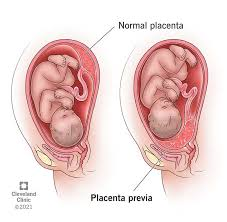A nurse in a prenatal clinic is teaching a group of clients about nutrition requirements during lactation. Which of the following statements should the nurse make?
The recommended intake of iron increases.
Zinc intake should be at least 12 mg per day.
Calcium intake should be at least 2,000 mg per day.
The recommended intake of folic acid remains the same as for pregnant women.
The Correct Answer is B
Choice A Reason:
The recommended intake of iron does not necessarily increase during lactation. In fact, the iron requirement may decrease because menstruation usually ceases, reducing iron loss. However, maintaining adequate iron intake is still important for overall health and to support the baby's growth.
Choice B Reason:
Zinc is crucial for immune function, cell division, and growth, making it an important nutrient during lactation. The recommended dietary allowance (RDA) for zinc for lactating women is indeed higher than for non-pregnant, non-lactating women, with an RDA of about 12 mg per day.
Choice C Reason:
While calcium is important for bone health, the recommended intake for lactating women is not as high as 2,000 mg per day. The RDA for calcium for lactating women is about 1,000 mg per day, similar to that for non-lactating women.
Choice D Reason:
The recommended intake of folic acid does not remain the same as for pregnant women. During pregnancy, the RDA for folic acid is higher to prevent neural tube defects. While folic acid is still important during lactation for cell growth and DNA synthesis, the requirement is slightly lower than during pregnancy.
Nursing Test Bank
Naxlex Comprehensive Predictor Exams
Related Questions
Correct Answer is C
Explanation
Choice A reason:
Precipitous labor is characterized by a labor that progresses rapidly and ends within three hours of its onset. It is not typically associated with painless, bright red vaginal bleeding. This condition is more likely to present with intense, frequent contractions and a rapid change in cervical dilation. Therefore, precipitous labor is not the correct answer in this scenario.
Choice B reason:
Abruptio placentae, also known as placental abruption, is a condition where the placenta detaches from the uterus before delivery. It can cause significant maternal and fetal complications. The classic presentation includes painful bleeding, uterine tenderness, and contractions. Given that the scenario describes painless bleeding, abruptio placentae is less likely to be the correct diagnosis.
Choice C reason:
Placenta previa is a condition where the placenta covers the cervix partially or completely. The hallmark sign of placenta previa is painless, bright red vaginal bleeding, which aligns with the scenario provided. This bleeding can occur spontaneously or be triggered by intercourse or a medical exam. Placenta previa is a serious condition that can lead to maternal and fetal hemorrhage and warrants immediate medical attention. Based on the information provided, placenta previa is the most likely diagnosis for the client described.
Choice D reason:
Threatened abortion refers to vaginal bleeding that occurs in the first 20 weeks of pregnancy, which may indicate a potential miscarriage. Since the client is at 36 weeks gestation, threatened abortion is not a relevant diagnosis for late-term bleeding. Additionally, threatened abortion is often accompanied by abdominal cramping, which is not mentioned in the scenario.

Correct Answer is A
Explanation
Choice A Reason:
Peanut butter should be eliminated from the diet of a pregnant client with PKU. It is a high-protein food that contains phenylalanine, an amino acid that individuals with PKU cannot metabolize properly¹. The accumulation of phenylalanine can lead to serious health issues for both the mother and the developing fetus, including the risk of intellectual disability in the child.
Choice B Reason:
Potatoes are generally safe for individuals with PKU to consume. They are not high in protein and thus do not contain large amounts of phenylalanine. However, portion sizes and overall dietary balance should be monitored by a healthcare professional to ensure proper nutrition.
Choice C Reason:
Apple juice is also safe for individuals with PKU. It does not contain protein and therefore is not a significant source of phenylalanine. It can be included in the diet as part of the fluid intake.
Choice D Reason:
Broccoli is a low-protein vegetable and is typically allowed in the diets of individuals with PKU. It contains some phenylalanine, but in much lower amounts compared to high-protein foods. As with all foods, it should be consumed in moderation according to dietary guidelines provided by a healthcare professional.
Whether you are a student looking to ace your exams or a practicing nurse seeking to enhance your expertise , our nursing education contents will empower you with the confidence and competence to make a difference in the lives of patients and become a respected leader in the healthcare field.
Visit Naxlex, invest in your future and unlock endless possibilities with our unparalleled nursing education contents today
Report Wrong Answer on the Current Question
Do you disagree with the answer? If yes, what is your expected answer? Explain.
Kindly be descriptive with the issue you are facing.
